Building talks to former Aecom director Andrew Link about his initiative to make it easier and more affordable for sports clubs to access vacant development sites
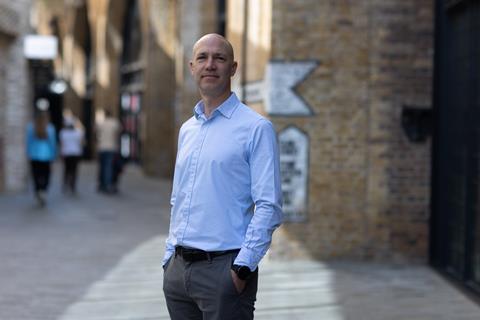
Andrew Link had been working at Bovis Lend Lease for nine years when he decided to roll the dice. He had built a promising career at the firm – then one of the UK’s best-known contractors – rising quickly through the ranks to become a senior project manager.
But Link had another commitment, as a volunteer for British Taekwondo, the national governing body for the Korean martial art that is responsible for selecting teams for the Olympics.
In 2007, he turned his side-gig into a full-time job when he left Bovis Lendlease to become operations director for British Taekwondo. Tasked with finding suitable space for the Olympic squad to train, Link agreed a deal with Manchester City Council to move the team from its base in Loughborough into an industrial space in Manchester.
“We kind of built up an Olympic programme around making use of a space that wasn’t purposely built for that activity,” he tells Building over a video call. “We had this aspiration to create a place of high achievement, like a production line where we will bring athletes in and turn them into champions.”
The following year, Taekwondo athlete Sarah Stevenson won Britain’s first Olympic medal in the sport at the 2008 Beijing summer Games.
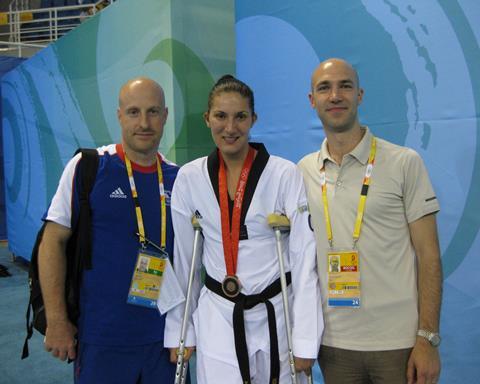
Years later, after returning to his career in construction, Link was giving a presentation at MIPIM on sports infrastructure and the legacy of the 2012 London Olympics. Instead of talking about major projects – the type which have proliferated around the former Olympic park in Stratford – he was inspired by his time in Manchester to focus his presentation on how to make the best use of available vacant space.
The question that Link asked was: why do sports clubs find it so hard to both find and fund training and recreational space when there are so many vacant sites across the country which neither earn their owners any income nor serve any useful purpose?
For many of those present, the talk hit home. Afterwards, Link was approached by several people offering up vacant space in their possession. The problem, as Link outlines, is that it is not that easy to accept.
While permitted development rights are relatively easy to access for certain uses, including office to residential, food and beverage and in some cases education, using vacant space for sports is typically more complicated.
Councils require applicants to go through the planning process to get authorisation for a site’s change of use, a process that can be too expensive for many small, community-based clubs. As with almost everything in the planning system, it can also be frustratingly slow, eating into the time that a vacant site has available before it is redeveloped.
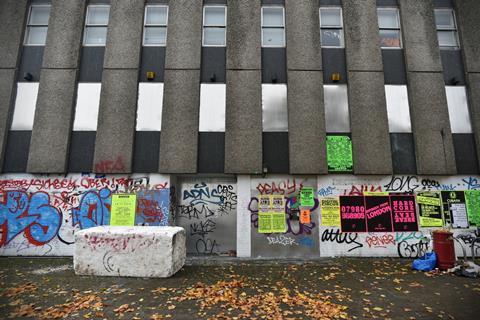
“If you have got a site that is due for development, but it may not be developed for three years, if you spend the first year in planning for that, then it’s unlikely you can actually do anything with a site, because your three-year window suddenly turns into two years, and that becomes unviable,” Link explains.
Finding suitable space is a challenge that is particularly prevalent in the sports sector – and one which appears to have worsened in recent years. Before the covid pandemic, around a quarter of youth and community sports clubs reported difficulty in accessing appropriate facilities, according to a survey by Sported. By 2021, that number had risen to 68%.
Link has enjoyed an abundance of prominent roles in construction since returning to the sector. After the 2012 London Olympics he was chief operating officer at the Construction Industry Council for three years. He was appointed director of project management at Rise Management Consulting for a further three years, then head of operations at project manager Fitsquared for five, and spent a year at Aecom as director of project management.
Now he is drawing from his sports background as the founder of Feat Factory, a real estate consultancy started in May this year that helps its clients “achieve the extraordinary” by blending high performance methodologies used in elite sport with real estate expertise.
He also has a new side-gig with Property Sports Network, a sports-themed networking business for the construction sector which organises group runs and other sporting activities. Founded by Link in 2019, the firm has grown rapidly with more than 600 events held to date, often taking place at major property conferences including UKREiiF.
The business, which recently agreed a strategic partnership with Building is behind Link’s new initiative – called Active Meanwhile – to get more vacant spaces transformed into meanwhile sports uses.
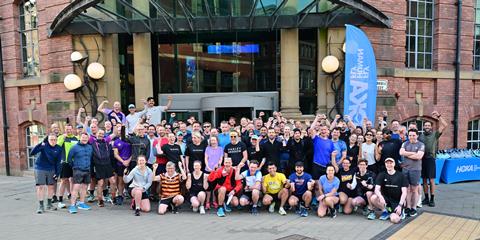
Following his talk at MIPIM, Link assembled a working group of volunteers to look into potential solutions. The team meets at each others’ offices and includes community engagement managers, leasing experts, architects specialising in sports and recreation and others working in property and engineering.
>> See also: Assemble Media Group and Property Sports Network announce exclusive strategic partnership
One example of the kind of case the group is looking at is a large sports club in east London with mostly female members. It has been offered an industrial unit to move into. But because the space is marked as class B, the local council has told the club that it would need to go through planning with a change of use application to convert it to the flexible class E.
This would be an expense that is beyond the resources of the club, which also needs the space much sooner than the planning process will allow.
Active Meanwhile is also talking to developer Hadley Property Group about installing a climbing wall in the former GSK headquarters in Brentford. The one million sq ft office building is due to be demolished in around five years’ time to make way for a vast mixed-use development designed by Howarth Tompkins, dRMM, Studio Egret West and Metropolitan Workshop, plans for which were submitted to Hounslow council in August.
The proposal is to install a sports meanwhile use in part of the site which would form the final phase of the development. The climbing wall would be the anchor activity, located inside the site’s 20m-high glazed atrium, with other uses including saunas, padel, squash, yoga and a gym also envisaged.
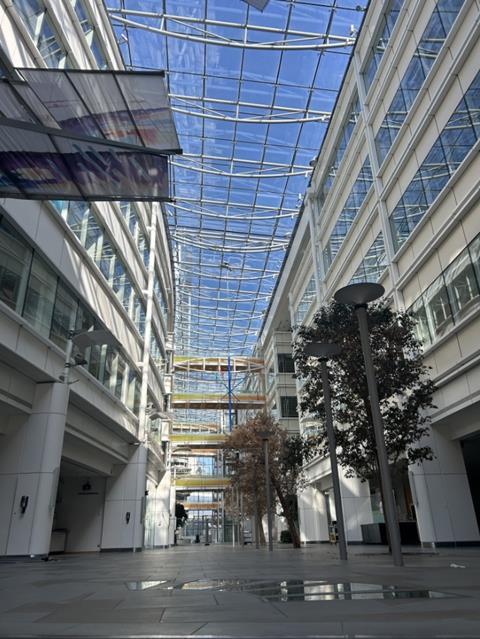
The existing site is not deemed occupiable under current office standards, so would otherwise remain empty until the replacement scheme is brought forward. The same issues apply: how can the space be put to use in a way that is affordable and makes the best use of the limited time available?
Link is calling for a new type of permitted development, “class F”, specifically for sports and recreation, which would compel councils to grant approval. The group has looked at existing permitted development rights, which are used in the entertainment sector to make use of vacant sites for filming, or in the food and beverage sector to set up pop-up sites such as boxparks.
For sports, a change of use application would have a 28-day time limit, after which it would be deemed to be approved automatically whether the council responds or not. The idea is that it would both speed up the planning process for meanwhile use applicants and reduce the burden on councils, which would not be obliged to add the application to what are often lengthy backlogs at under-resourced planning departments.
This consent would then last for up to five years, giving the council the opportunity to throw out the consent when it expires.
“What we are looking to do is create a lower entry point for any type of site use,” Link says. “Our view is that the more opportunities are opened up, it allows more opportunities for people to move spaces.
“Because one of the things that challenges most sports is availability of space… Our thought is that, if we can open more spaces up, it gives clubs an opportunity to move from one to another.”
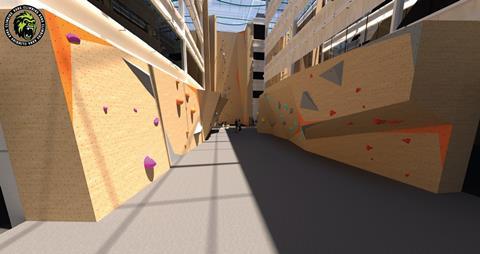
Link believes the proposal would also give developers further opportunities to engage communities, to build up a good reputation in a local area prior to projects being brought forward, and to have a positive social impact. The sports and recreation use, Link argues, is potentially preferable for developers to other uses such as pop-up bars, which risk provoking complaints about noise or rowdy behaviour.
We think this ticks a lot of boxes with regards to trying to get the nation more active and healthy, trying to create more spaces for activity and to actually create accessible space for sports and recreation in more communities
If implemented through a change in planning law, the proposal would also have negligible cost to the public purse and would be, as Link says, a very “politics-friendly” use of the government’s time.
“We think this ticks a lot of boxes with regards to trying to get the nation more active and healthy, trying to create more spaces for activity and to actually create accessible space for sports and recreation in more communities,” Link says.
“It ticks boxes for the government in terms of reducing the burden on bureaucracy, of reducing the burden of planning and getting things happening quicker.”
The group has drawn up a list of MPs who it plans to target over the course of the current parliamentary session in order to raise the profile of the proposal and gain some traction among policymakers. With a government short of good press in recent months, there are certainly reasons to be hopeful that it will turn heads.
Property Sports Network has already met with crossbench peer Tanni Grey Thompson, a former Paralympic wheelchair racer who is advocating for the firm with other members of the House of Lords with a sports background, including Sebastian Coe, Colin Moynihan and Christopher Holmes.
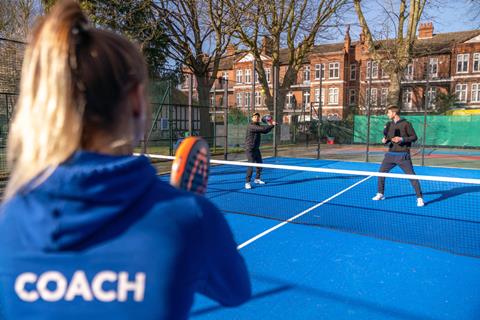
The proposal has also received a warm response from the industry, especially developers with an eye for community engagement. In fact, it has been roundly praised by everyone to whom Link and his team have spoken.
So, why has it not happened before?
“That’s what everybody asks,” Link laughs. “They say, ‘Oh that seems obvious. Why has nobody done that?’ And we think that maybe that’s a sign of a good idea, isn’t it?”
I’m a firm believer that everybody out there has got some sort of sport or physical activity that would be good for them
He believes it has not been suggested before because “we often look at big solutions for big problems and don’t break them down into enough detail”. What Link and his team have done is to pinpoint the specific problem, namely what he sees as unnecessary barriers in the planning system.
The issue of why more meanwhile use schemes for sport do not come forward is such a broad topic that “you end up kind of getting this overwhelming paralysis of too many options”. The working group has sought to be specific about a single workable solution and “drive it through”, rather than bombard policymakers with multiple half-baked ideas.
For Link, the initiative combines the two sides of his professional life – his career in construction project management and his work with sports organisations. What motivates him is the positive impact that sport can provide to both physical and mental health, and to the communities where the clubs which run those sports are based.
“I’m a firm believer that everybody out there has got some sort of sport or physical activity that would be good for them,” he says, “and, if they haven’t, it’s probably just because they haven’t found the ideal one suited to them yet.”
Andew Link’s CV
1998-2007 senior project manager, Bovis Lend Lease
2007-10 operations director, GB Taekwondo
2010-12 competition manager, London organising committee of the Olympic Games and Paralympic Games
2012-15 chief operating officer, Construction Industry Council
2015-18 director of project management, Rise Management Consulting
2018-23 head of operations, Fitsquared
2023-24 director of project management, Aecom
2019- founder, Property Sports Network
2025- chief executive and founder, Feat Factory


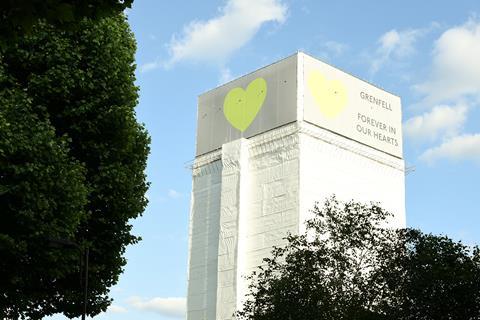
















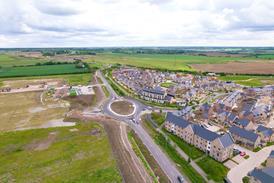







No comments yet